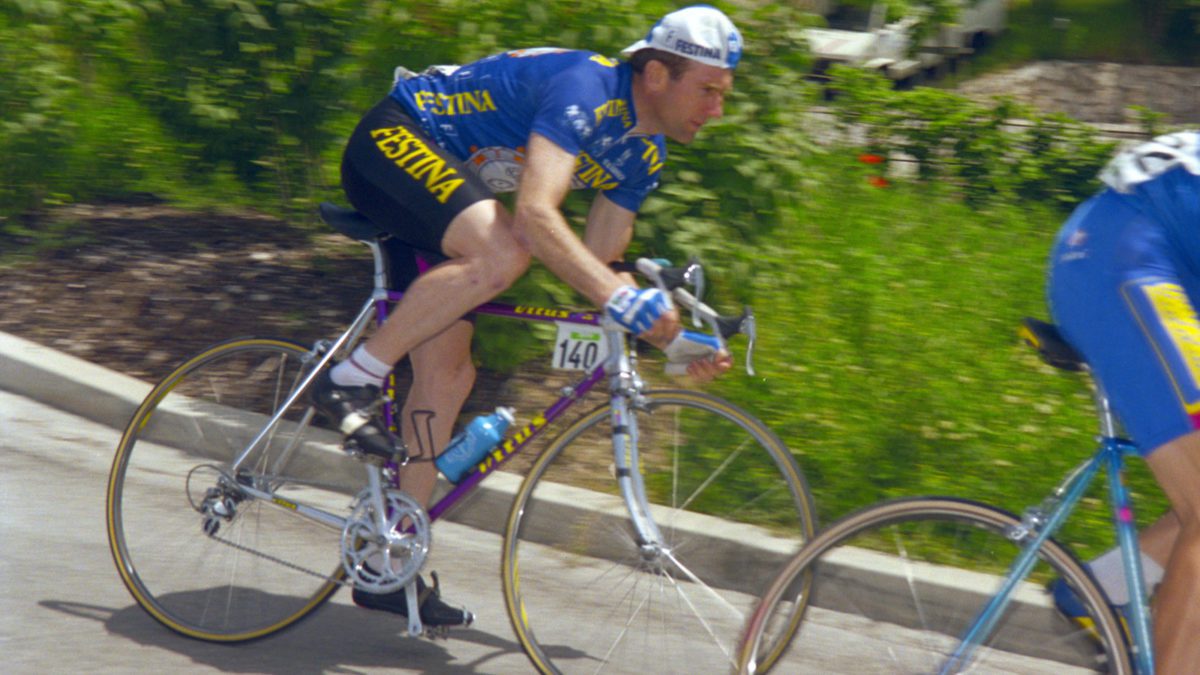Old bikes suck: Why there’s no point in getting cog’d up in the past
Things have progressed way more than you know
 Photo by:
Sirotti
Photo by:
Sirotti
You probably have no idea just how great that bike you’re riding is. Gather ’round, kids, because Uncle Matt is here to tell you about the old days. I’m talking about the bikes from the early ’90s and earlier. Man they were terrible.
I mean, they looked cool. Colnagos were rad, along with anything Italian, to be honest. But they sucked. S-u-c-k-e-d. And before you think I’m being a negative Nancy, I will happily remind you I rode ‘em all. I am a big fan of bike stuff from the past, but I stick to videos and photos. You won’t see me signing up for any Eroica stuff anytime soon.
Because old bikes suck.
Let me tell you why, from top to bottom. First off, the obvious: they weighed a ton. Your average steel racing bike would come in easily at roughly 11 kg, which is, I guess, fine if everyone else had the same bike. Sure, some had aluminum bikes, like the famous Vitus brand. I had one of those, too. Yes, it was light, but it handled like a wet noodle. I remember going down a mountain at the junior national championships in Quebec, about a million years ago, and seeing my Cateye computer (we’ll get to that, too) hit 101 km/h. And there I was, a skinny 16 year old on a whippy aluminum bike beginning to wonder if this was my last ride ever.
Oh, and brakes? Also crap. Shimano was definitely better than Campagnolo back then (or a ton of other groups you’ve probably never heard of, such as Sachs, as they went to the bike-brand cemetery in the sky) but for the most part, rim brakes back then really stank. Google Campagnolo Delta brakes for me. Looked cool, but you had a better chance sticking your foot on the asphalt to stop. Mavic and Modolo made beautiful levers and calipers, and worked slightly better, but not by much. Mavic did made a beautiful starfish crank, even if it weighed more than a fully-grown cat.
Shifting? Ever heard of friction shifting? No? Good. Without index shifting (oh by the way, the shifters were on the down tube, not your handlebars, also super fun in a sprint finish), you had to look down at your shifter and freewheel to make sure the chain dropped in the right cog. If you picked the wrong gear in a sprint? Tough. You’re committed to it, whether it’s too big or too small.
What I learned from riding the sandy Koksijde World Cup in the ’90s
Speaking of gears. Take a look at the 11–28 on your bike right now. Look how many cogs there are. Chances are you have 11 or 12 of those beauties. Imagine having six. Or seven. There was no such thing as a “28″ unless you had a mountain bike (and chances are you didn’t). If you ever wondered why all the guys at the Tour de France had massive thighs, it was thanks to grinding up Mont Ventoux in a 21.
You know your nice Garmin or Wahoo you’re rocking to see your stats every ride? And then upload to Strava in a second? In the old days, we had magnets on our spokes, with a computer on the handlebars and a long wire wrapped around the cables and the forks to a sensor. No matter how beautifully you wrapped it, it always looked ugly. When you were finished the ride, you’d, of course, open a “training diary” and use a “pen” to write in your numbers.
Pedals. You could honestly get dropped in the first 100 m of a race if you didn’t get your feet in your toe-clip pedals in the old days. For cyclocross, you basically didn’t have your feet on the pedals correctly half the time. Speaking of ’cross, if you didn’t have a highly sought-after Alan aluminum bike, you’d basically finish the race with a literal dent in your shoulder from hoisting your 30-lb. behemoth at every run-up.
Old bikes are fun to look at. That’s for sure. But leave them for Instagram. And go hug your modern machine right now, and say thank you.
This story originally appeared in the April/May 2022 issue of Canadian Cycling Magazine

